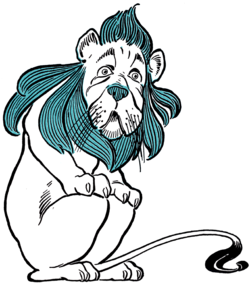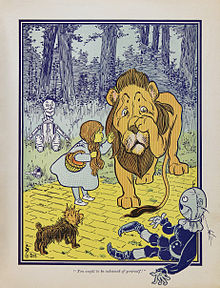
The Magic of Oz is the thirteenth book in the Oz series written by L. Frank Baum. Published on June 7, 1919, one month after the author's death, The Magic of Oz relates the unsuccessful attempt of the Munchkin boy Kiki Aru and former Nome King Ruggedo to conquer Oz.

Oscar Zoroaster Phadrig Isaac Norman Henkle Emmannuel Ambroise Diggs is a fictional character in the Land of Oz created by American author L. Frank Baum. The character was further popularized by a stage play and several films, including the classic 1939 film and the 2013 prequel adaptation.

Glinda is a fictional character created by L. Frank Baum for his Oz novels. She first appears in Baum's 1900 children's classic The Wonderful Wizard of Oz, and is the most powerful sorceress in the Land of Oz, ruler of the Quadling Country South of the Emerald City, and protector of Princess Ozma.

Nick Chopper, the Tin Woodman, is a character in the fictional Land of Oz created by American author L. Frank Baum. He first appeared in his 1900 book The Wonderful Wizard of Oz and reappeared in many other subsequent Oz books in the series. In late 19th-century America, men made out of various tin pieces were used in advertising and political cartoons. Baum, who was editing a magazine on decorating shop windows when he wrote The Wonderful Wizard of Oz, was inspired to invent the Tin Woodman by a figure he had built out of metal parts for a shop display.

The Land of Oz is a magical country introduced in the 1900 children's novel The Wonderful Wizard of Oz written by L. Frank Baum and illustrated by W. W. Denslow.

The Scarecrow is a character in the fictional Land of Oz created by American author L. Frank Baum and illustrator W.W. Denslow. In his first appearance, the Scarecrow reveals that he lacks a brain and desires above all else to have one. In reality, he is only two days old and merely naïve. Throughout the course of the novel, he proves to have the brains he seeks and is later recognized as "the wisest man in all of Oz," although he continues to credit the Wizard for them. He is, however, wise enough to know his own limitations and all too happy to hand the rulership of Oz to Princess Ozma and become one of her trusted advisors, though he typically spends more time having fun than advising.
The Wicked Witch of the West is a fictional character who appears in the classic children's novel The Wonderful Wizard of Oz (1900), created by American author L. Frank Baum. In Baum's subsequent Oz novels, it is the Nome King who is the principal villain; the Wicked Witch of the West is rarely even referred to again after her death in the first book.
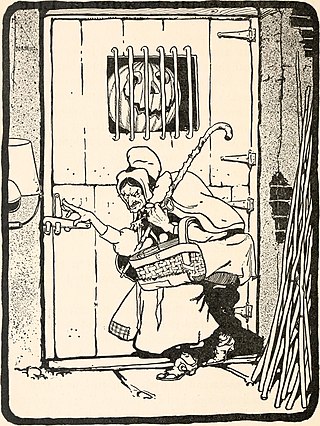
Mombi is a fictional character in L. Frank Baum's classic children's series of Oz Books. She is the most significant antagonist in the second Oz book The Marvelous Land of Oz (1904), and is alluded to in other works. Mombi plays a very important role in the fictional history of Oz.
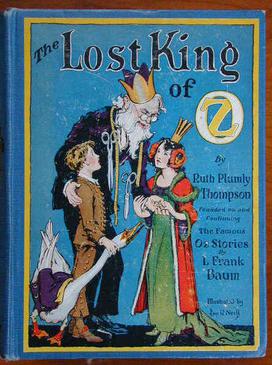
King Pastoria is a fictional character mentioned in the Oz books by American author L. Frank Baum. He was the rightful ruler and King of the undiscovered Land of Oz, but was mysteriously removed from his position when the Wizard of Oz unexpectedly came to the country and took the throne, proclaiming himself as the new dominant ruler of Oz. Shortly after, Pastoria's only child and heir, Princess Ozma, suddenly vanished, leaving not a single clue of her whereabouts.

The Wonderful Wizard of Oz, known in Japan as Ozu no Mahōtsukai (オズの魔法使い), is a Japanese anime television series adaptation based on four of the original early 20th century Oz books by L. Frank Baum. In Japan, the series aired on TV Tokyo from 1986 to 1987. It consists of 52 episodes, which explain other parts of the Oz stories, including the events that happened after Dorothy returned home.
Return to Oz is a 1964 animated television special produced by Crawley Films for Videocraft International. It first aired on 9 February 1964 in the United States on NBC's The General Electric Fantasy Hour block, then later aired on syndication from 1965 to the 1990s and on the Disney Channel in 1995. It was directed by F. R. Crawley, Thomas Glynn and Larry Roemer from a teleplay by Romeo Muller, who later wrote Dorothy in the Land of Oz. This was the first special produced by Arthur Rankin Jr. and Jules Bass of Rankin/Bass Productions.

Dorothy and the Witches of Oz is a 2012 film directed by Leigh Scott, based on the early 20th century novels The Wonderful Wizard of Oz, Ozma of Oz, The Road to Oz and The Magic of Oz by L. Frank Baum. The film stars Paulie Redding, Billy Boyd, Eliza Swenson, Mia Sara, Lance Henriksen, and Christopher Lloyd. A longer version of the film was originally released as a TV miniseries in 2011 called The Witches of Oz, distributed by MarVista Entertainment. The miniseries was over an hour longer and had earlier versions of the special effects. The miniseries was originally released in 2011 in Europe, though its United Kingdom premiere was not until July 5, 2012 on the Sci-Fi Channel.

The Wizard of Oz is a musical commissioned by The Muny based on the 1900 novel The Wonderful Wizard of Oz by L. Frank Baum and the 1939 film, The Wizard of Oz, using the film's songs by Harold Arlen and E. Y. Harburg. The book of the musical is by Frank Gabrielson, who would later write an adaptation of The Marvelous Land of Oz (1960) for Shirley Temple.
Dorothy of Oz is a 1989 children's novel written by L. Frank Baum's great-grandson Roger S. Baum. The book details Dorothy Gale returning to the Land of Oz when a Jester has been using the wand of the Wicked Witch of the West to take over the Land of Oz. The book was adapted into a film called Legends of Oz: Dorothy's Return in 2014 by Clarius Entertainment.
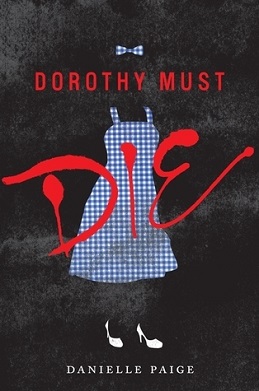
Dorothy Must Die is a 2014 young adult book by Danielle Paige and her debut novel. The book, which was produced through Full Fathom Five, was released on April 1, 2014 through HarperCollins and was preceded by the novella No Place Like Oz.
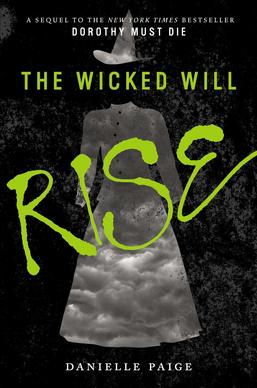
The Wicked Will Rise is a young adult novel by Danielle Paige, and the sequel to the 2014 book Dorothy Must Die. It was published by HarperCollins on March 30, 2015. It continues the story of high school girl Amy Gumm in her mission to assassinate Dorothy Gale, who has become twisted and evil.
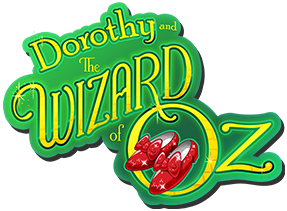
Dorothy and the Wizard of Oz is an American animated children's television series loosely based on L. Frank Baum's 1900 novel The Wonderful Wizard of Oz and its subsequent books, as well as its 1939 film adaptation. The series debuted on Boomerang SVOD on June 29, 2017. The series was picked up for the second and third seasons. The series ended on July 31, 2020, after three seasons.
